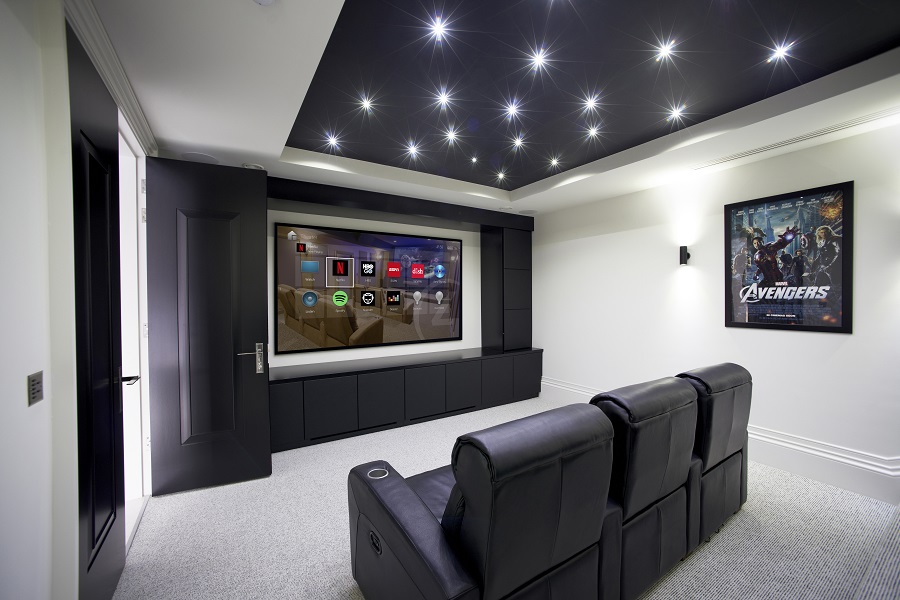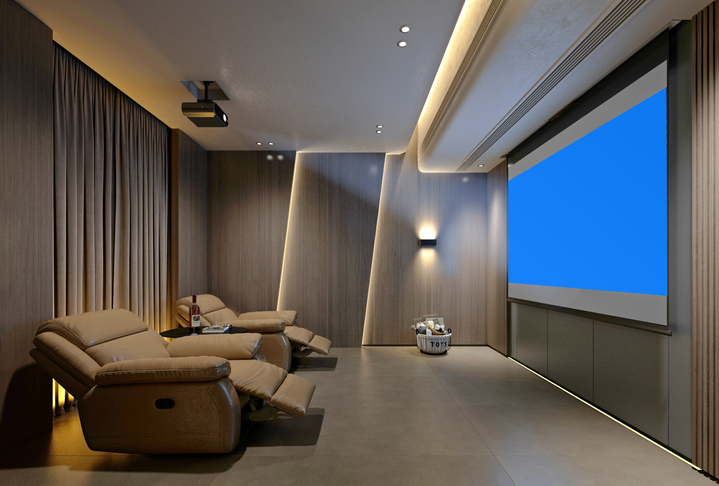Home Theater Tampa: Bringing Theater-like Experiences Directly to You
Wiki Article
Home Theater 101: Everything You Need to Know for a Motion Picture Experience in your home
Creating a home movie theater that matches the cinematic experience of a business theatre entails cautious consideration of multiple components, including screen selection, stereo, and room format. Each aspect plays an essential duty in achieving the wanted atmosphere and functionality. Whether you are considering the perfect display dimension or the details of border audio, understanding these basics is important. As we discover these essential components, it ends up being apparent that the options made can significantly influence your overall viewing experience, leaving one to ponder how these decisions will form your personal cinema.Picking the Right Screen
When establishing a home cinema, choosing the appropriate display can make or damage the checking out experience - home theater tampa. The display acts as the centerpiece of your configuration, affecting picture quality, seeing angles, and general visual. Trick aspects to consider consist of display resolution, dimension, and kindFirst, establish the appropriate screen dimension based on your space dimensions and seating range. Next, choose in between various screen kinds, such as fixed-frame, mechanized, or retractable displays, each offering distinctive benefits.
Resolution is another essential element. For a really immersive experience, take into consideration a screen made for 4K or even 8K web content, making certain intensity and clearness. In addition, consider the display's gain, which influences brightness and comparison; a greater gain can improve illumination in well-lit rooms, while a reduced gain may be better for darker atmospheres.
Choosing Sound Equipment
Audio tools is an important element of any home cinema system, considerably boosting the general viewing experience. The selection of audio gear can establish the depth, quality, and immersion of audio, crucial for producing a cinematic environment.When choosing audio equipment, take into consideration a border stereo, which usually consists of a receiver, numerous speakers, and a speaker. A 5.1 or 7.1 network system is advised, where the very first number represents the audio speakers and the second the speaker, giving an immersive soundscape. The receiver is the heart of the system, managing sound and video clip signals, and ought to sustain contemporary styles like Dolby Atmos for an enhanced spatial experience.
Quality speakers are essential; search for versions that provide a balanced audio account with great bass feedback. Floor-standing speakers can produce richer noise, while bookshelf choices conserve space. In addition, take into consideration wireless alternatives for simplicity of installation, although wired systems usually provide exceptional performance.

Ideal Seating Arrangements
Producing a suitable home cinema experience hinges dramatically on optimal seating arrangements. The setup of seats plays an important role in both comfort and watching quality, directly influencing the total motion picture experience.First, think about the screen size and viewing distance. A common standard is to position seats at a distance around 1.5 to 2.5 times the diagonal dimension of the display. This guarantees an immersive experience without straining the eyes.
Following, altitude is crucial. If your seating remains in a tiered style, the back rows must be more than the front to stay clear of blockages. For flat seats, ensure that the front row is not also near to the screen, and that every person has a clear line of sight.
Moreover, take into consideration the setup in terms of social characteristics. Group seats can enhance the communal experience, while private seats might be liked for personal viewing.

Finally, focus on comfort with ergonomic seats that supports extensive viewing durations. Integrating recliner chairs or supported seats can considerably enhance the experience, making the home cinema a favored location for both entertainment and relaxation.
Lighting and Atmosphere
Reliable lighting and setting are crucial elements of a properly designed home theater, as they considerably influence the watching experience. The right illumination can improve the motion picture feeling, while poor options can take away from it. For optimum outcomes, think about a split lights approach that includes ambient, job, and accent lighting.Ambient lighting provides general lighting, ensuring that the space is not why not look here completely dark, which can stress the eyes. Dimmer buttons are very recommended, enabling modifications based on the web content being viewed. Task lighting, such as wall sconces or flooring lights, uses useful illumination for tasks like analysis or browsing the area without disrupting the total ambience.
Accent lighting can be used to highlight architectural attributes or produce prime focus, adding depth and interest to the area. LED strip lights behind screens or along shelves can offer a subtle radiance that enhances the aesthetic experience without frustrating the audience.
:strip_icc()/heritage-lake-model-2524d1f5bc974300a65f3187a6ebd929.png)
Wiring and Installation Tips
A well-planned wiring setup is crucial for attaining optimal performance in your house theater system. Proper circuitry not just makes sure top quality look at this now sound and video clip signals however also enhances the total visual of your room. Begin by mapping out your format, recognizing where each part will be placed, including your display, audio speakers, and receiver.When picking cable televisions, prioritize high-quality, suitably determined electrical wiring to reduce signal loss. HDMI wires must be made use of for video links, while speaker cord must match the requirements of your speakers and amplifier. Select in-wall rated wires to follow safety requirements and maintain a tidy appearance.

Conclusion
In recap, creating an outstanding home cinema experience calls for careful consideration of different components, consisting of screen option, audio tools, seating setups, illumination, and electrical wiring. By prioritizing these variables, a cinematic environment can be effectively duplicated, enabling for immersive checking out experiences that measure up to useful link typical theater setups.Creating a home movie theater that equals the cinematic experience of an industrial theatre involves careful consideration of multiple components, consisting of screen choice, audio systems, and room layout.When establishing up a home cinema, picking the ideal display can make or break the watching experience. Next off, pick in between different screen kinds, such as fixed-frame, mechanized, or retracting displays, each offering unique advantages. For a genuinely immersive experience, take into consideration a display created for 4K or even 8K content, ensuring sharpness and quality.In recap, producing an extraordinary home cinema experience calls for cautious consideration of numerous aspects, including screen selection, audio tools, seating plans, lighting, and circuitry.
Report this wiki page